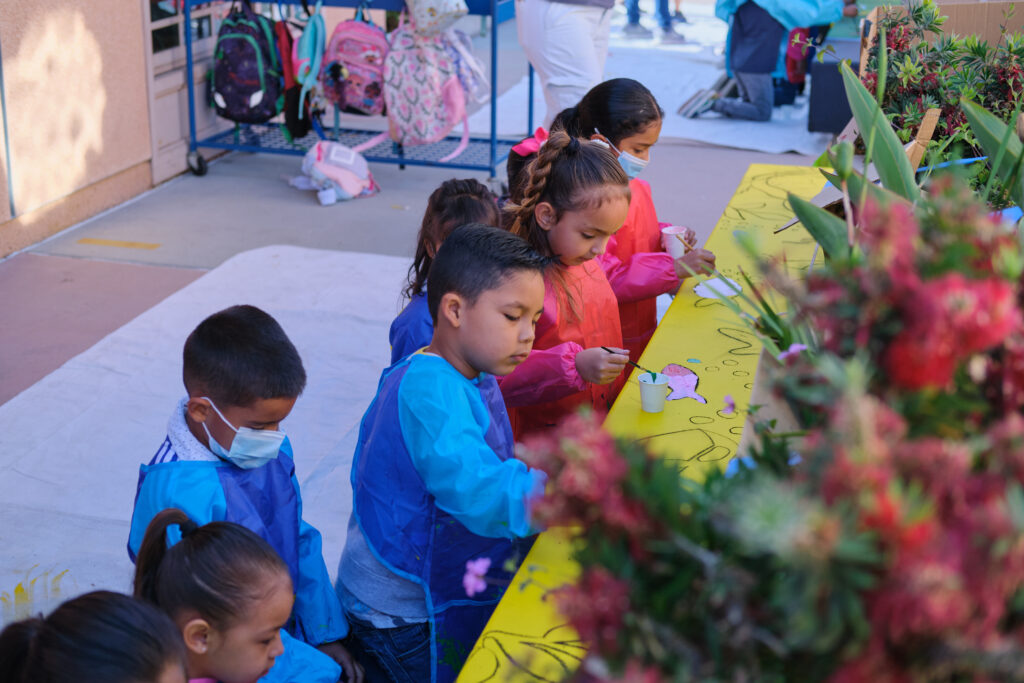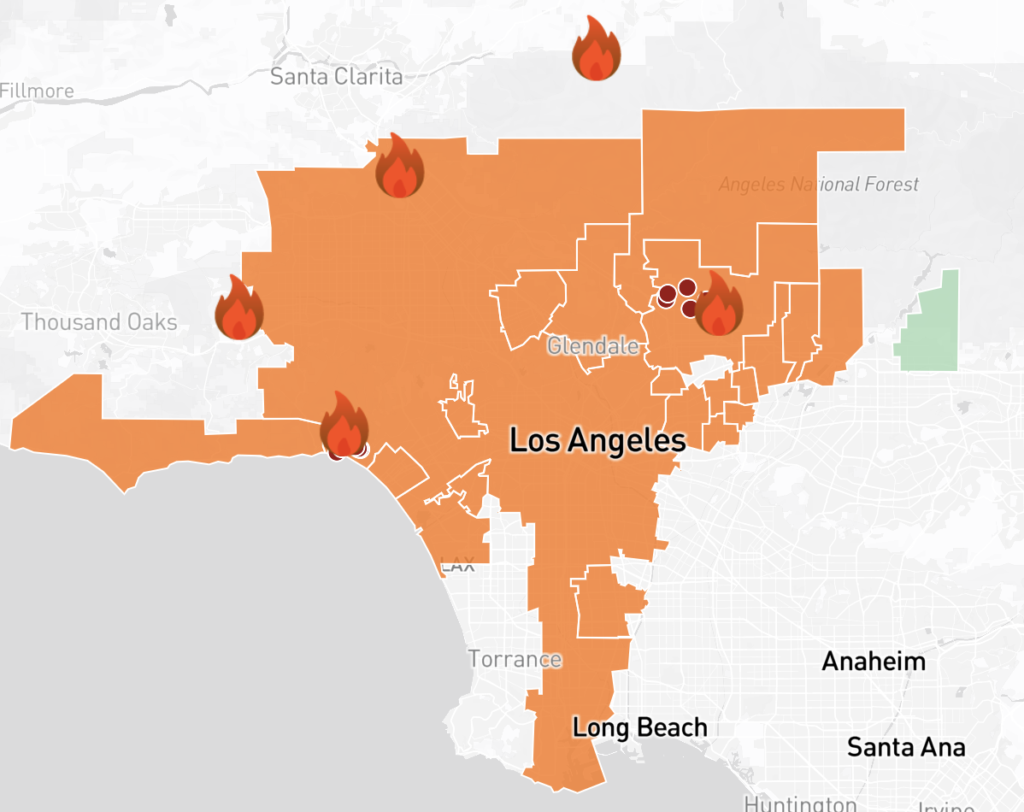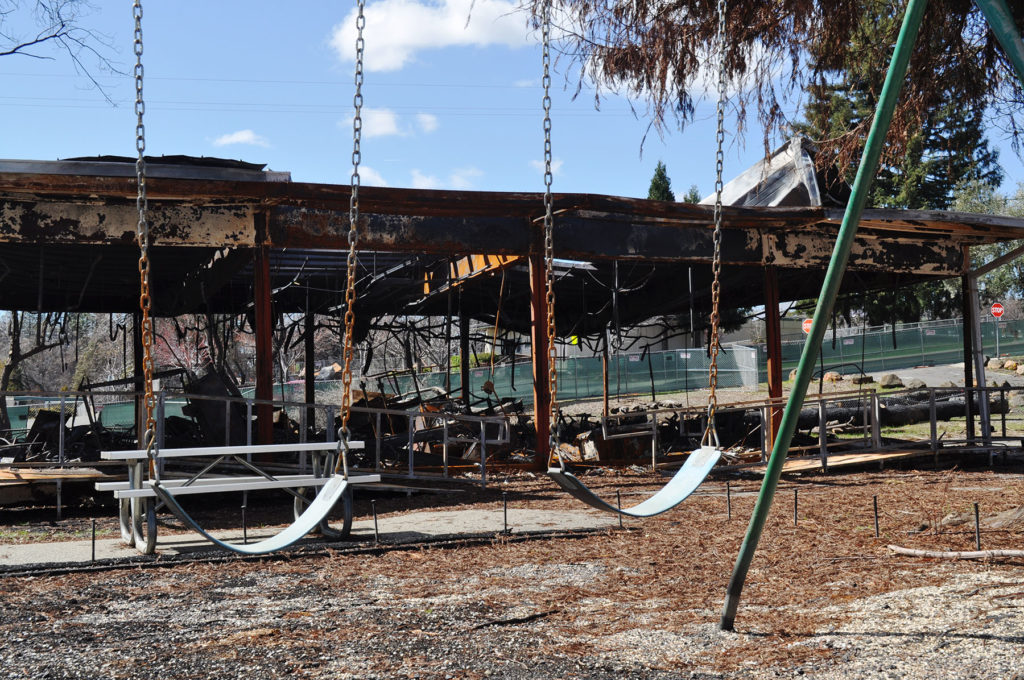
Kindergartners paint a mural at Ellen Ochoa Learning Center in LAUSD.
Credit: Courtesy of Nightflare
Marcos Hernandez lived in a garage for years when he first came to this country from El Salvador as a refugee at age 11. He left his small pueblo of San Gerardo alone, fleeing a country ravaged by war, seeking a better life.
“After you’ve been hungry, after you’ve been bombed and you have survived so many times, you build up this belief that I must be here for a purpose,” said Hernandez, a soft-spoken man with an understated manner that belies his heroic life story. “There must be a reason. And you just try to follow that. I am here to serve my community.”
That’s why he’s devoted his career to lifting the lives of children in Cudahy, a tiny, densely populated, and tightly knit city near the Los Angeles River and the 710 freeway, where roughly a third of the population lives below the poverty line. Hernandez went on to become the principal of a school, the Ellen Ochoa Learning Center, just a few blocks from the garage he once called home.
“This is the poorest city west of the Mississippi River,” says Hernandez, who is candid about his struggles. “I failed most of my classes my first year because I worked the graveyard shift. Almost everyone on my block belonged to a gang. Getting in and out of that community was hard. There was always somebody waiting to jump me because I didn’t want to join the gang.”

Poverty is often generational. Hernandez understands the lingering trauma it leaves behind. He will never forget living in that garage, only being allowed to enter the main house and use the bathroom at certain times of day.
“It was rough, but after a while, you train your body,” he says, matter-of-factly.
Overcoming adversity with grace is in his bones. He doesn’t dwell on his own hardships, which include battling cancer, but he certainly understands the power of resilience. When he works with families in his district, he knows how hard they fight to keep their heads above water. Most of the parents at Ellen Ochoa did not finish high school, but all want better for their children, many of whom are English language learners.
“There are patterns of oppression that our students experience,” says Hernandez, a father of three who radiates patience and calm. “It’s this perpetual cycle where they just don’t have the opportunities that kids in other communities have. I want to raise that bar. The thing that I have always said, that I try to live by every day, is whatever kids in Malibu, kids in Palos Verdes, have access to, I want kids here to have.”
That’s where arts education comes in. He sees the arts as a path to equity, a way to help children heal from the scars left by grinding poverty. That’s the vision of Turnaround Arts: California, an arts education program founded by famed architect Frank Gehry and education advocate Malissa Shriver that transforms the state’s lowest-performing schools through the arts.
“We’re talking about human beings, not data points and test scores,” said Shriver. “People have thought the arts were like a cherry on top. And instead, we’re actually the undergirding of it all. We’re not the extra, we’re the foundation.”
Affiliated with the Kennedy Center for the Performing Arts in Washngton, D.C., the project has reached 35,000 students in 33 elementary and middle schools across the state in the last 10 years, and hopes are high that Proposition 28, the state’s new arts education mandate, will help fuel expansion.
“It’s a huge driver to ensure more equity so that we’re not relying on parent fundraising to decide who gets the arts in schools,” said Turnaround’s executive director, Barbara Palley. “One thing that we’re excited about is it would open the path for more schools that are interested in Turnaround Arts.”
Hernandez believes the children who are least likely to be exposed to the arts are those who need it the most. Most schools that participate in this program see gains in both reading and math, a finding that tracks with exhaustive evidence that the arts boost academic achievement as well as spark engagement.
“My specialty is supporting students who are struggling,” he says. “They need a second chance or a third chance to get them going. Because that was me. This education thing wasn’t in my mind at all. It wasn’t on my radar. I needed money.”
His childhood was often grueling, working in the fields at the age of 10, becoming a dishwasher at 12, but he has never wavered in his love of people, his desire to make a difference in the world. When his father questioned why he’d give up a solid job as a restaurant manager to go to college, he stuck to his guns.
“You should have seen his face. He was kind of happy for me, but he couldn’t understand why you’d leave a good job,” he recalls. “It clicked for me at that age that the more that we could push ourselves, the more we could have an impact on future generations.”

That’s the level of dedication he has brought to his work at Ellen Ochoa, and he plans to bring the same tenacity to his new assignment as principal of nearby International Studies Learning Center at Legacy High School. While he says it will be hard to walk away from Ellen Ochoa, where he has watched the arts bolster academics and curb misbehavior, he feels certain the work will continue.
“It’s not about me as an individual,” he says with characteristic humility. “It’s a collective project; it belongs to the community. They own it.”
Covid hit the district hard. The school quickly became a community hub, providing thousands of meals, Covid tests and vaccinations for those in need.
Hernandez has used the arts as a tool to help rebuild a sense of community, an appreciation of togetherness, coming out of the pandemic. The students have formed an orchestra, they’ve painted murals, and they’ve even designed buildings with the renowned Gehry.
“This is their land. This is their community,” says Hernandez. “When you walk by with your family and you look at the beautiful murals and you say, you know what? I did that. That creates incredible pride for our students.”
His secret weapon is empathy. He treats everyone like family, taking time to get to know children as people as well as students.

“Marcos cares for every family member and every child like his own,” said Alison Yoshimoto-Towery, executive director of the UC/CSU Collaborative for Neuroscience, Diversity and Learning. “He’s probably done over 500 home visits to learn about the hopes and dreams of his families, and to build trust with the community.”
Giving back is a way of life for Hernandez. He’s an activist as well as an educator. He often rides his bike to work from Long Beach, and along the way, he gives necessities to those living on the bike path by the river.
“He’s a humble-servant type of leader,” says Shriver. “He’s not climbing over people to get to the next position. … There’s no ego there. He treats everybody with a lot of dignity. That’s why he’s such a tremendous leader and also just effective.”
Education isn’t a job for him — it’s a calling. He works nights, weekends, and even during vacations to engage his students in activities that stimulate hearts as well as minds, from running marathons to painting murals.
“That’s my passion,” he says simply. “That’s my purpose, my purpose is to serve.”











